First of all, we will turn to Herodotus to tell us, in broad strokes, the funerary customs of Egypt. After the death and the logical signs of mourning, the embalming was carried out, which, as is repeated today in our funerals, depended on the money that was willing to spend. In the most sumptuous, the viscera of the corpse were extracted and the abdominal cavity was filled with aromatic substances; Once the incisions were sewn, the body was left to “macerate” in a kind of bitumen for 70 days and later the body was covered with linen bandages impregnated with rubber extracted from tree resin. The most modest had to settle for a purge that cleaned the abdominal cavity and the corresponding bath in bitumen. Logically, this entire process is carried out in the workshops of the embalmers to whom the body of the deceased was delivered as soon as they died... except those of illustrious or especially beautiful women. In these cases, they allowed 3 days to pass, when the body was already in the process of decomposition, because there were known cases of embalmers who abused the corpses (the first documented cases of necrophilia?).
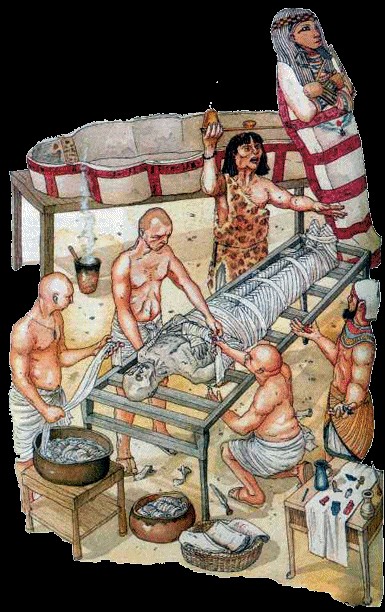
The earliest use begins in ancient times and, after some confusion, misunderstanding, and a lot of greed, ends with the mummies in medicine bottles.
The asphalt, bitumen or bitumen that is used today to pave roads or as a waterproof coating for roofs, was already known by the Greeks and Persians. This bituminous substance, as well as viscous and blackish, was already used in ancient times for construction or to protect trees from insect attacks; although it also served, according to what Pliny the Elder tells us , for poultices on wounds, skin diseases, toothaches or combined with wine to stop diarrhoea. For the Greeks it was asphaltos (where our asphalt is derived from) and for the Persians mumia . Due to its many uses and the fact that only natural deposits in the Middle East were known, when the Egyptian burials were discovered they were astonished to discover that the bodies were covered with bitumen... or so they thought. It wasn't really bitumen, but resins used to preserve the bodies that over time acquired a hue that made them resemble bitumen. But this would be known later. For them, they had found an alternative source of a miraculous medicinal remedy, shoe polish. And as happens on many occasions, in which the part assumes the whole, the Persian term mumia that initially called bitumen and, by mistake, resins, in the twelfth century it became used to name the entire corpse (mummy) and, unfortunately for them, the entire mummy acquired those healing powers. As a result of this belief and with the seasoning of the legend, promoted by the merchants, which said that the mummies had a mysterious force that was transferred to everyone who ingested it, the number of Egyptian mummies that left Egypt in the direction of to Europe and were sold by apothecaries as a remedy for almost all ills (“mummy powder ”). And since the law of supply and demand already existed, given the increasing difficulties in finding mummies and the high demand from Europe, prices skyrocketed and the vultures (sorry, opportunists) flocked. They took the corpses of slaves, criminals, the elderly... and even animals - let us remember that there were also animal mummies -, treated them with bitumen and dried them in the sun to produce mummies that they later sold to merchants. They thought that, and they were right to do so, once the mummies were reduced to powder, which was the most common form of consumption, it would be almost impossible to differentiate between a real Egyptian mummy and a fresh corpse treated with bitumen and dried in the sun. Mummies were "consumed" in Europe until well into the 18th century.
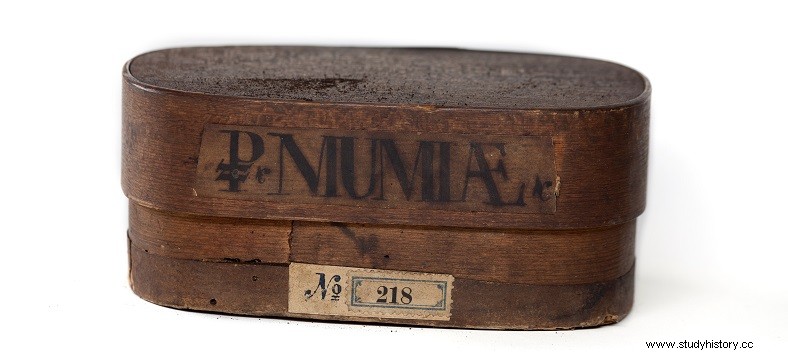
No one would have been surprised if the article The Macabre Sunday Entertainments had included the undressing of mummies… accompanied by pastries and tea.
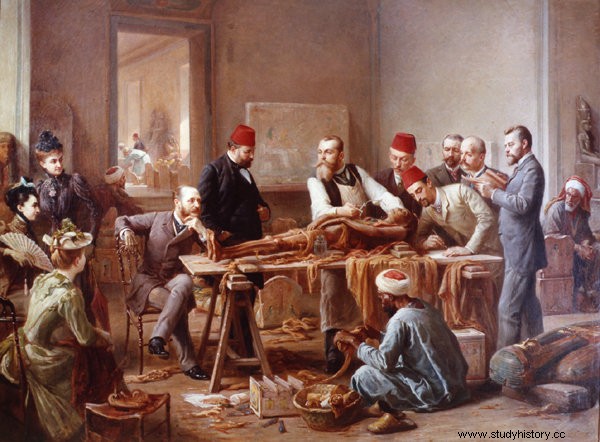
In the 19th century, it was customary among high society to celebrate mummy-undressing parties. They consisted of meeting in theaters or at friends' houses to remove the bandages from a mummy and see what came out of there. The event was usually executed by a doctor or an antiquarian and took place as a mixture of macabre spectacle and exploration for scientific purposes. The British anatomy expert at Charing Cross Hospital, Thomas Pettigrew , better known as Mummy Pettigrew, was one of the most active mummy dissectors. He sold tickets that sold out quickly. He collected the knowledge from him in the monograph History of Egyptian mummies .
Margaret Murray , the first woman to organize one of these parties, she wanted to show the public that the mummies were not magical, but simply preserved human remains that could be learned from. Her best-remembered undressing party is the one she organized in 1908 at the University of Manchester for the mummified brothers Nekht-ankh and Khnumu-Nekht.
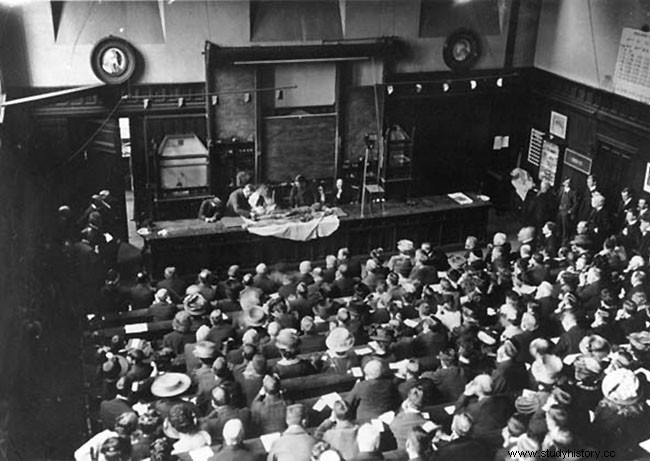
They were also used to make a pigment… the mummy brown (mummy brown). This color began to be made in the 16th century and, as its name suggests, its main ingredient was mummy powder. To make this pigment, Egyptian mummies were pulverized and the resulting powder was mixed with resin and myrrh, resulting in different shades of toasted brown. If you are fans of English painting from the mid-nineteenth century, surely you have seen some work in which this color has been used. At the end of the 19th century and the beginning of the 20th, painters began to put aside the mummy brown due to the scarcity of available Egyptian mummies and when they became aware of using pigments made from the remains of human bodies. In fact, when the English painter Edward Burne-Jones discovered the main ingredient of this pigment, went to the study of it, took all the tubes and jars of mummy brown and gave them a proper burial.
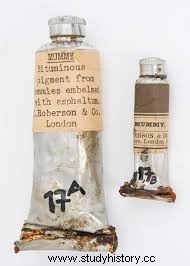
And to let them rest in peace, I will end with two urban legends that surround the world of mummies:one due to the sly humor of Marw Twain and another that, to this day, some still continue to defend with evidence taken with pins. Marw Twain embarked as a reporter on one of the first organized trips on a boat tour of Europe and the Holy Land. The chronicles would later be published in the travel book The innocents abroad (1872). In an excerpt from this book, he relates…
I am not going to talk about the railway, because it is like any other train. I will just say that the fuel they use for the locomotive is made up of three thousand year old mummies bought by the ton […]
He concluded by saying that the mummies of the pharaohs burned better than those of other mortals. What good old Mark must have laughed at all this time. The other legend places the Egyptian mummies in the US paper mills in the mid-nineteenth century. Given the scarcity of raw material for the manufacture of paper, the bandages of the mummies made of linen were used. It is said that the first brown paper used to wrap meat and fish was made from the bandages of an Egyptian mummy.
I am not saying that a mummy has not been burned in some boiler or even that it has been used to wrap sandwiches, but it would be as far-fetched to speak of mummies as fuel or as raw material for paper as to say that Don Quixote was used to wipe your ass because someone in some time of need did so... surely someone has.
